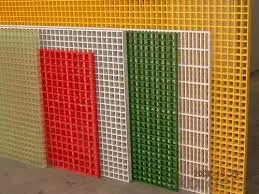
-
 Afrikaans
Afrikaans -
 Albanian
Albanian -
 Amharic
Amharic -
 Arabic
Arabic -
 Armenian
Armenian -
 Azerbaijani
Azerbaijani -
 Basque
Basque -
 Belarusian
Belarusian -
 Bengali
Bengali -
 Bosnian
Bosnian -
 Bulgarian
Bulgarian -
 Catalan
Catalan -
 Cebuano
Cebuano -
 China
China -
 China (Taiwan)
China (Taiwan) -
 Corsican
Corsican -
 Croatian
Croatian -
 Czech
Czech -
 Danish
Danish -
 Dutch
Dutch -
 English
English -
 Esperanto
Esperanto -
 Estonian
Estonian -
 Finnish
Finnish -
 French
French -
 Frisian
Frisian -
 Galician
Galician -
 Georgian
Georgian -
 German
German -
 Greek
Greek -
 Gujarati
Gujarati -
 Haitian Creole
Haitian Creole -
 hausa
hausa -
 hawaiian
hawaiian -
 Hebrew
Hebrew -
 Hindi
Hindi -
 Miao
Miao -
 Hungarian
Hungarian -
 Icelandic
Icelandic -
 igbo
igbo -
 Indonesian
Indonesian -
 irish
irish -
 Italian
Italian -
 Japanese
Japanese -
 Javanese
Javanese -
 Kannada
Kannada -
 kazakh
kazakh -
 Khmer
Khmer -
 Rwandese
Rwandese -
 Korean
Korean -
 Kurdish
Kurdish -
 Kyrgyz
Kyrgyz -
 Lao
Lao -
 Latin
Latin -
 Latvian
Latvian -
 Lithuanian
Lithuanian -
 Luxembourgish
Luxembourgish -
 Macedonian
Macedonian -
 Malgashi
Malgashi -
 Malay
Malay -
 Malayalam
Malayalam -
 Maltese
Maltese -
 Maori
Maori -
 Marathi
Marathi -
 Mongolian
Mongolian -
 Myanmar
Myanmar -
 Nepali
Nepali -
 Norwegian
Norwegian -
 Norwegian
Norwegian -
 Occitan
Occitan -
 Pashto
Pashto -
 Persian
Persian -
 Polish
Polish -
 Portuguese
Portuguese -
 Punjabi
Punjabi -
 Romanian
Romanian -
 Russian
Russian -
 Samoan
Samoan -
 Scottish Gaelic
Scottish Gaelic -
 Serbian
Serbian -
 Sesotho
Sesotho -
 Shona
Shona -
 Sindhi
Sindhi -
 Sinhala
Sinhala -
 Slovak
Slovak -
 Slovenian
Slovenian -
 Somali
Somali -
 Spanish
Spanish -
 Sundanese
Sundanese -
 Swahili
Swahili -
 Swedish
Swedish -
 Tagalog
Tagalog -
 Tajik
Tajik -
 Tamil
Tamil -
 Tatar
Tatar -
 Telugu
Telugu -
 Thai
Thai -
 Turkish
Turkish -
 Turkmen
Turkmen -
 Ukrainian
Ukrainian -
 Urdu
Urdu -
 Uighur
Uighur -
 Uzbek
Uzbek -
 Vietnamese
Vietnamese -
 Welsh
Welsh -
 Bantu
Bantu -
 Yiddish
Yiddish -
 Yoruba
Yoruba -
 Zulu
Zulu
Innovative Dual Lamination Solutions for Improved Durability in GRP Products
Enhancing Durability with GRP Dual Lamination Products
In today's fast-paced industrial landscape, the demand for materials that offer both durability and lightweight properties is ever-increasing. One such innovation leading the charge in this realm is GRP (Glass Reinforced Plastic) dual lamination products. These advanced materials provide a wide range of applications across various sectors, including transportation, construction, and marine, thanks to their unique combination of strength, flexibility, and resistance to environmental factors.
Understanding GRP Dual Lamination
GRP dual lamination products are created through a meticulous process that involves layering glass fiber reinforced polymer with additional protective coatings. This sophisticated approach not only enhances the mechanical properties of the material but also significantly increases its durability against various adversities, such as corrosion, wear, and UV degradation. The dual lamination process creates a robust barrier, making these products resilient in harsh environments.
The primary advantage of GRP dual lamination lies in its sheer strength-to-weight ratio. Compared to traditional materials like steel or aluminum, GRP is much lighter, allowing for easier handling and transportation while maintaining exceptional structural integrity. This feature is particularly beneficial in industries such as aerospace and automotive, where weight reduction can lead to improved fuel efficiency and performance.
Applications of GRP Dual Lamination Products
The versatility of GRP dual lamination products makes them suitable for an array of applications. In the construction industry, these materials are gaining popularity for use in façades, roofing systems, and even interior fixtures. The inherent resistance to moisture and chemicals makes them ideal for environments where exposure to harsh conditions is prevalent, such as in coastal regions.
grp dual lamination products for enhanced durability and

In the marine sector, GRP dual lamination is extensively used for boat hulls and other components. The lightweight nature, combined with resistance to saltwater and UV radiation, ensures longevity and superior performance of marine vessels. Additionally, these materials can be easily molded into complex shapes, allowing for innovative design possibilities in both commercial and recreational crafts.
Moreover, the automotive industry is also leveraging GRP dual lamination technology for manufacturing lightweight components that require high strength and durability. From body panels to structural supports, the deployment of such advanced materials helps manufacturers meet stringent safety standards while enhancing vehicle performance.
Environmental Considerations
As the world becomes increasingly conscious of environmental issues, the sustainability of material choices is coming under scrutiny. GRP dual lamination products can also play a role in this aspect. The longevity of these materials means less frequent replacements and reduced waste over time. Furthermore, many manufacturers are now adopting eco-friendly resins and production processes, making GRP products even more appealing for environmentally-conscious consumers.
Conclusion
In conclusion, GRP dual lamination products represent a significant advancement in material science, offering enhanced durability and versatility across various applications. Their unique properties, including lightweight characteristics and resistance to environmental factors, position them as a leading choice in industries ranging from construction to automotive and marine. As technology continues to evolve, we can expect further innovations within this realm, paving the way for even greater durability and sustainability in material solutions. With the right application, GRP dual lamination products can not only withstand the test of time but also contribute to a greener and more efficient future.









